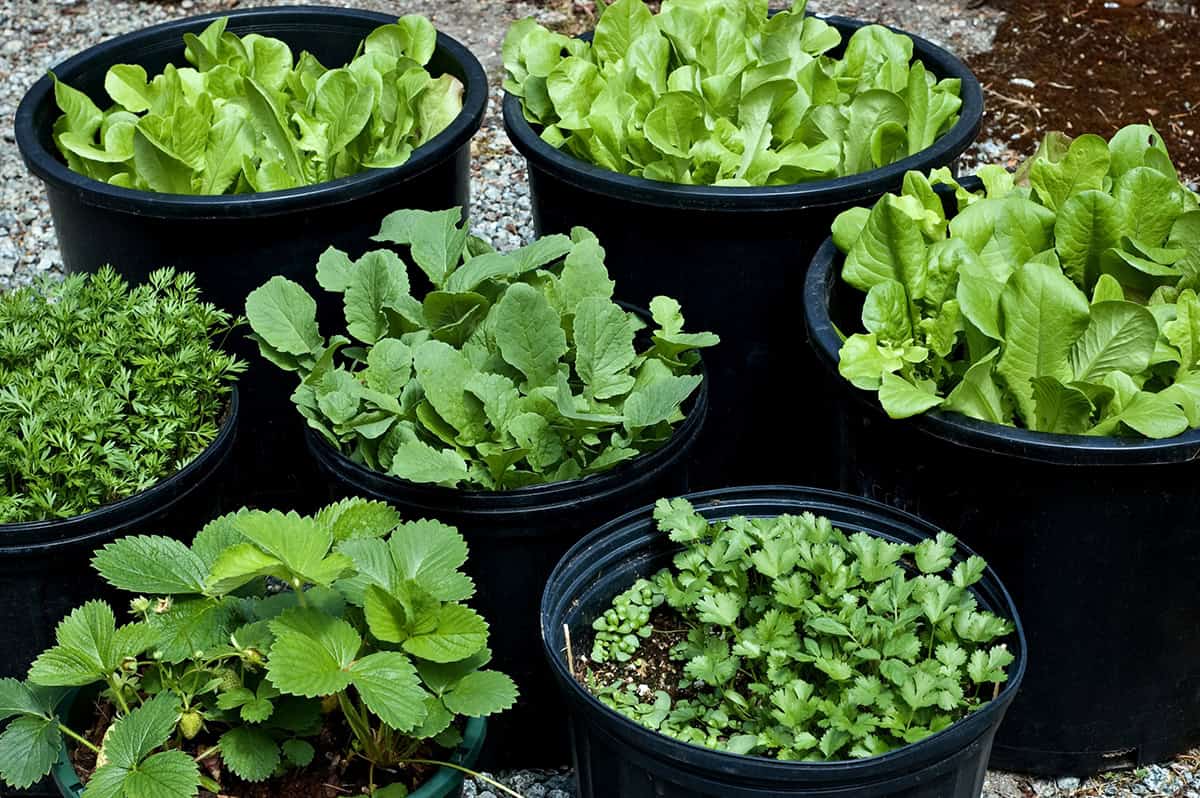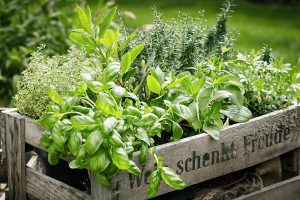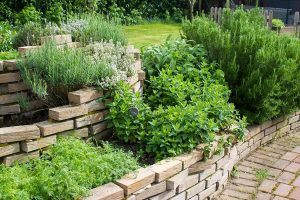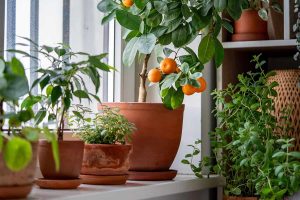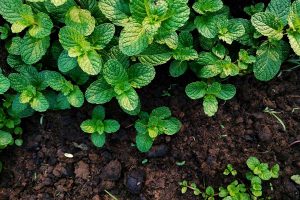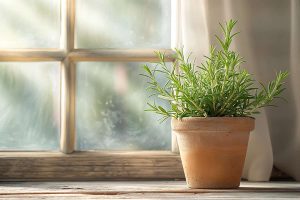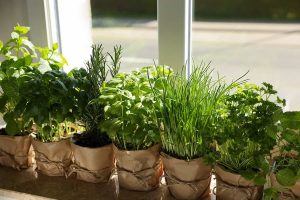No garden? No problem. Herbs are perfectly happy in containers, and they’ll reward you with fragrance and flavor right at your fingertips. Read on to learn which ones are the easiest to grow.
Table of Contents
Tips & Tricks For Growing Herbs In Containers
Start with a good soil mix—something light and soilless that drains well. Skip the heavy garden dirt; your herbs will thank you.
Drainage holes are a must. Herbs hate sitting in soggy soil. Water when the top inch feels dry—don’t just stick to a schedule.
Find a sunny spot—six hours at least. Parsley is fine with a bit of shade, but most herbs want full sun. Give the pots a turn now and then so all sides get a taste of light.
If you’re short on space, go for small or slow-growing varieties. Mix things up by planting a few herbs together, or toss in some flowers for fun. Snip your herbs often; it keeps them growing.
Hot weather dries out pots fast, so you might be watering more than you expect. Fertilize lightly—herbs don’t need much. Watch for pests, but healthy, watered plants usually fend off trouble. Harvest with clean scissors to keep them producing.
Common Herbs To Grow In Containers
Even if space is tight, you can still enjoy fresh herbs. Plenty of them are happy to grow in pots if you give them a little attention.
Basil
Basil’s got that rich aroma everyone loves. Keep its soil evenly moist—don’t let it dry out. Full sun is best. Pinch off the top leaves to keep it bushy and delay flowering.
Once it has a few sets of true leaves, start harvesting. It grows fast, so give it a little fertilizer now and then. Aphids can be a pain. Basil’s an annual, so you’ll need new plants each year.
Mint
If you’re into fresh tea or desserts, mint’s a breeze. It spreads like crazy, so a container keeps it in check. Go for a wide pot—mint likes room to roam.
Keep the soil damp but not soggy. Some afternoon shade helps, especially if it’s hot. Cut it back if it gets leggy, and pick leaves often. Swapping out the soil each year helps keep it healthy.
Parsley
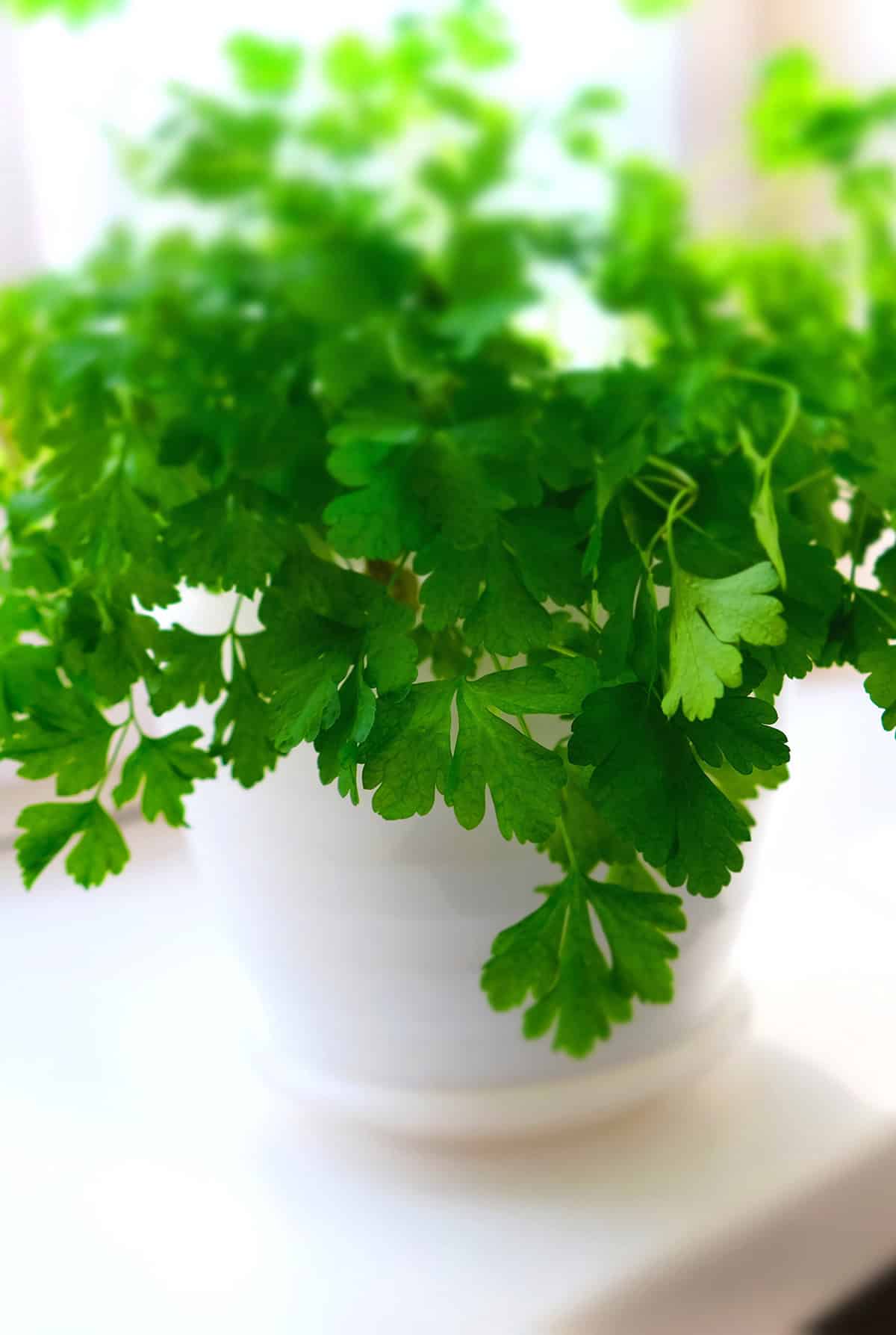
Parsley likes rich, well-drained soil and steady moisture. Morning sun with a bit of afternoon shade works well. Both curly and flat-leaf types do fine in pots.
Snip from the outside to encourage new growth. It’s technically biennial, but most folks replant every year. Fertilize lightly, and don’t let the roots sit in water.
Cilantro (Coriander)
Cilantro grows fast but bolts when it gets hot. To keep it coming, sow seeds every few weeks. Make sure your pot drains well—wet roots are no good.
Morning sun and some shade during the hottest hours is ideal. Use both the leaves and seeds in the kitchen. Harvest leaves while they’re young. If you want coriander seeds, let a few plants flower.
Thyme
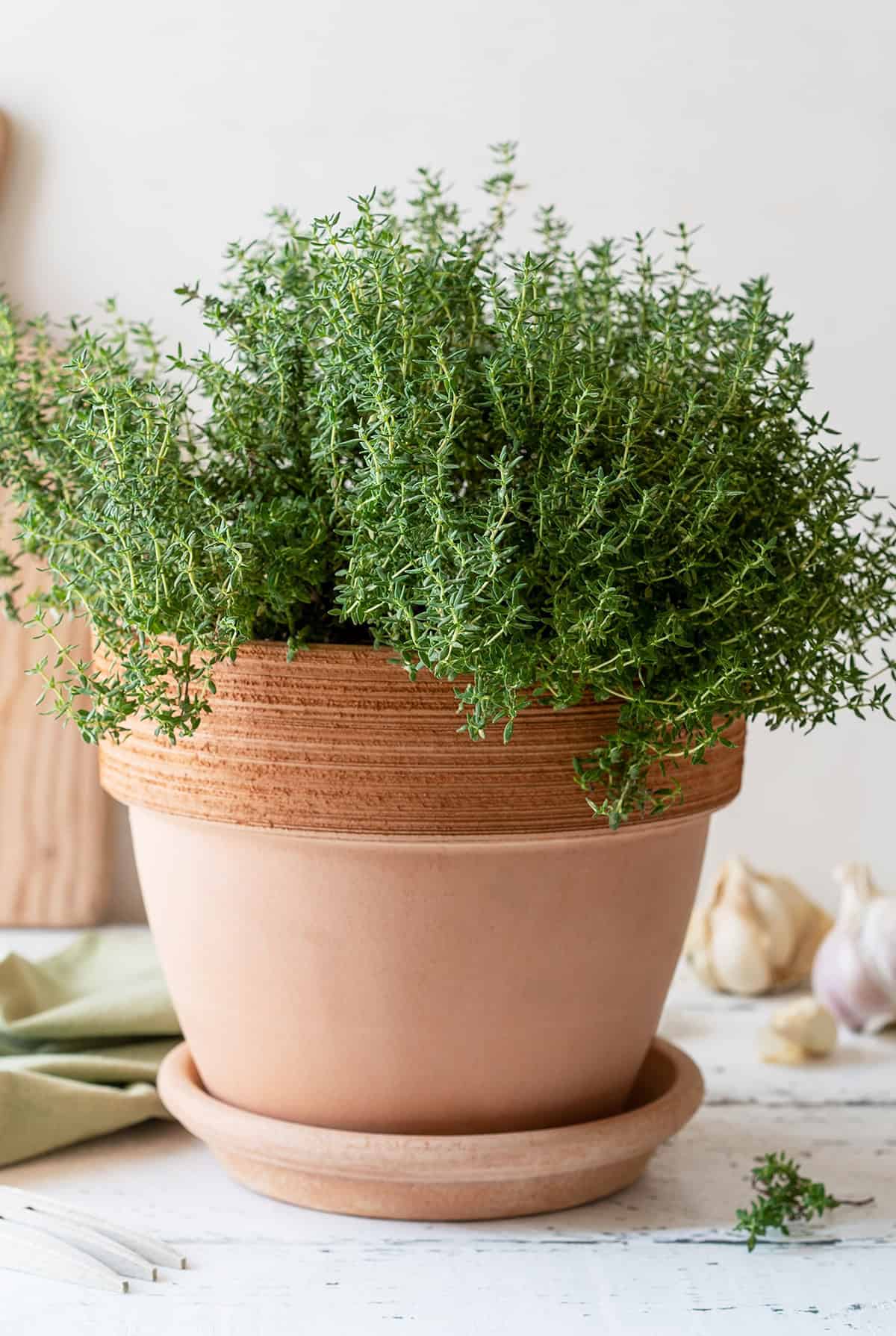
Thyme’s tiny leaves and woody stems like dry, well-drained soil and plenty of sun. Don’t overwater—it handles drought better than soggy roots.
Stems start upright, then trail, so thyme looks good in hanging baskets too. Trim it to keep things tidy. It’s perennial, so with some care, it’ll stick around for years.
Oregano
Oregano likes full sun and a gritty mix. Skip rich soil and go easy on water. It actually tastes better when grown a bit lean.
Let the soil dry out before watering again. Harvest by snipping stems above a leaf node. It’s perennial and appreciates being repotted or divided now and then.
Rosemary
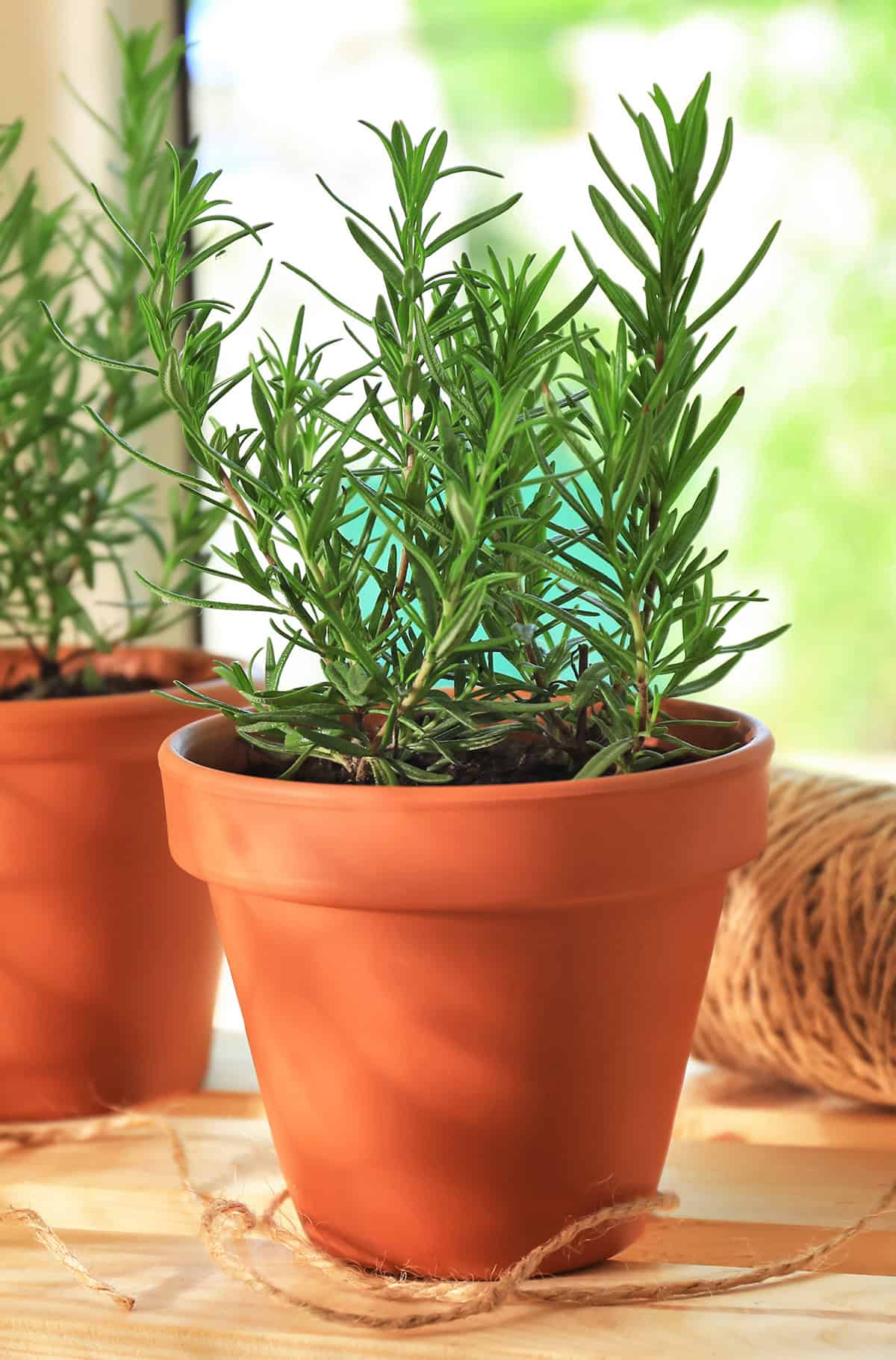
Rosemary grows slowly but eventually makes a nice bushy plant. Pick a deep pot with good drainage and add some sand to the mix.
Full sun is best. Don’t keep it too wet—rosemary hates soggy roots. Trim it as it grows. In cold climates, bring it inside for winter.
Sage
Sage has soft, gray-green leaves and a strong aroma. It likes fast-draining soil and lots of sun. Too much fertilizer dulls the flavor, so go easy.
Let the soil dry out between waterings. Harvest before it flowers for the best taste. Prune after flowering for fresh growth. Old sage turns woody, so replace every few years.
Chives
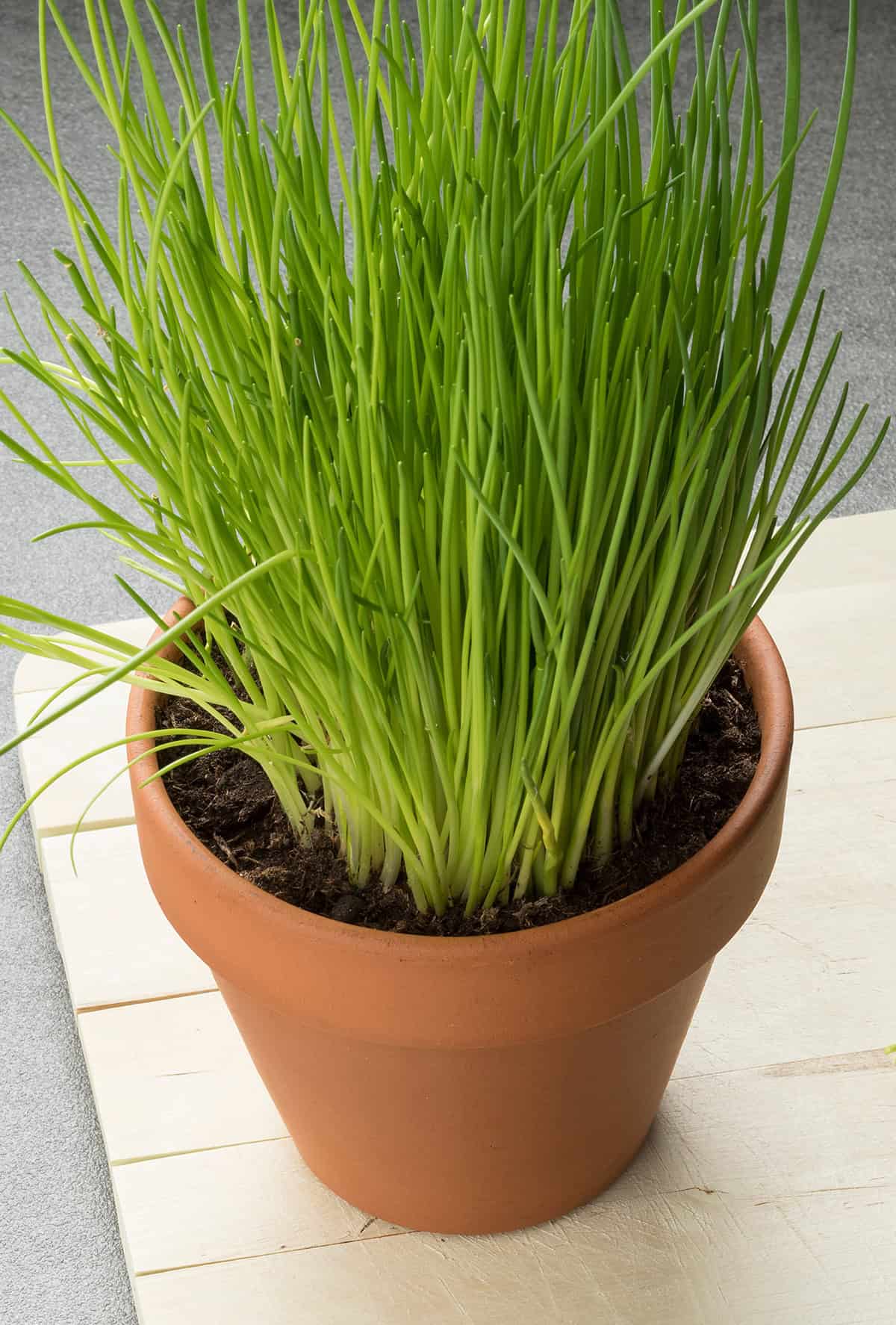
Chives are great for a mild onion kick and those neat tubular leaves. They like moist, fertile soil and do well in partial to full sun.
Snip from the base for steady harvests. The purple flowers are edible too. Divide every few years, and water well in heat to keep them perky.
Dill
Dill grows fast with feathery leaves. It needs a deep pot for its taproot and plenty of sun. Keep the soil moist.
Pick leaves when the plant is young. Once it flowers, leaf production drops. Remove seed heads if you want more leaves. Replant regularly for a steady supply.
Tarragon
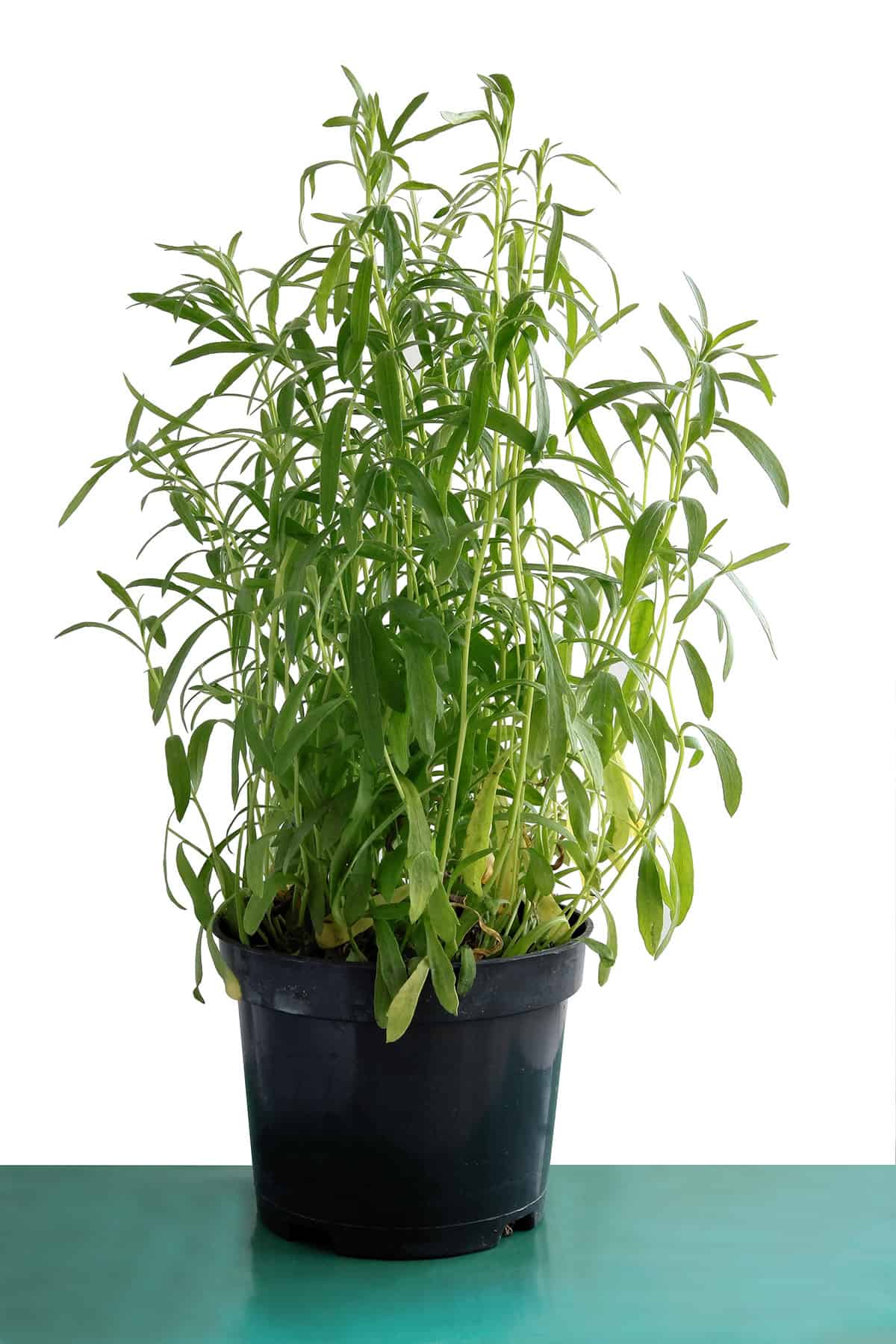
Tarragon sports narrow, fragrant leaves. Use a medium pot with well-drained soil. It likes sun but can handle some shade.
Don’t overwater—soggy soil is trouble. Prune to keep it compact. If winters are cold, bring it inside; French tarragon doesn’t handle frost well.
Lemongrass
Lemongrass grows tall, with arching stalks. It needs a big, sturdy pot and rich, well-drained soil.
Full sun is best. Water often to keep soil slightly moist. Harvest stalks at about 12 inches. Overwinter inside or start new plants from cuttings.
Lemon Balm
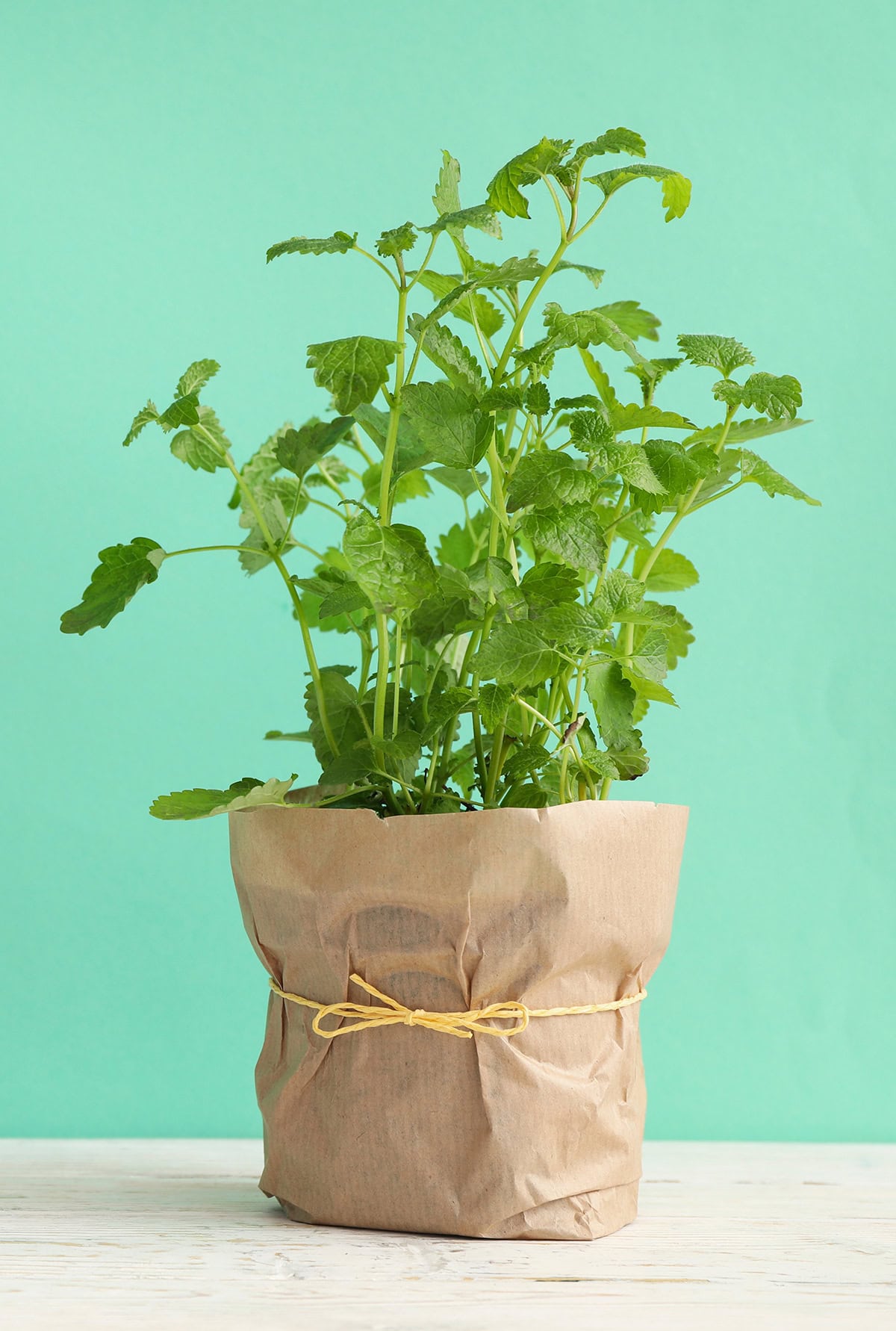
Lemon balm has bright, fragrant leaves. Plant it in a medium pot with regular potting mix. It tolerates some shade and likes moderate watering.
Trim regularly to keep it bushy. Remove flower spikes for better leaves. Containers keep it from spreading too much. Divide every few years to keep it going strong.
Marjoram
Sweet marjoram loves sun. Use light, sandy soil with good drainage. Water regularly, but don’t let it get soggy.
Pick just before it flowers for the best flavor. Pinch back for bushier growth. Marjoram doesn’t like frost, so bring it in if it gets cold. It grows best when young, so replant every few years.
Bay Laurel
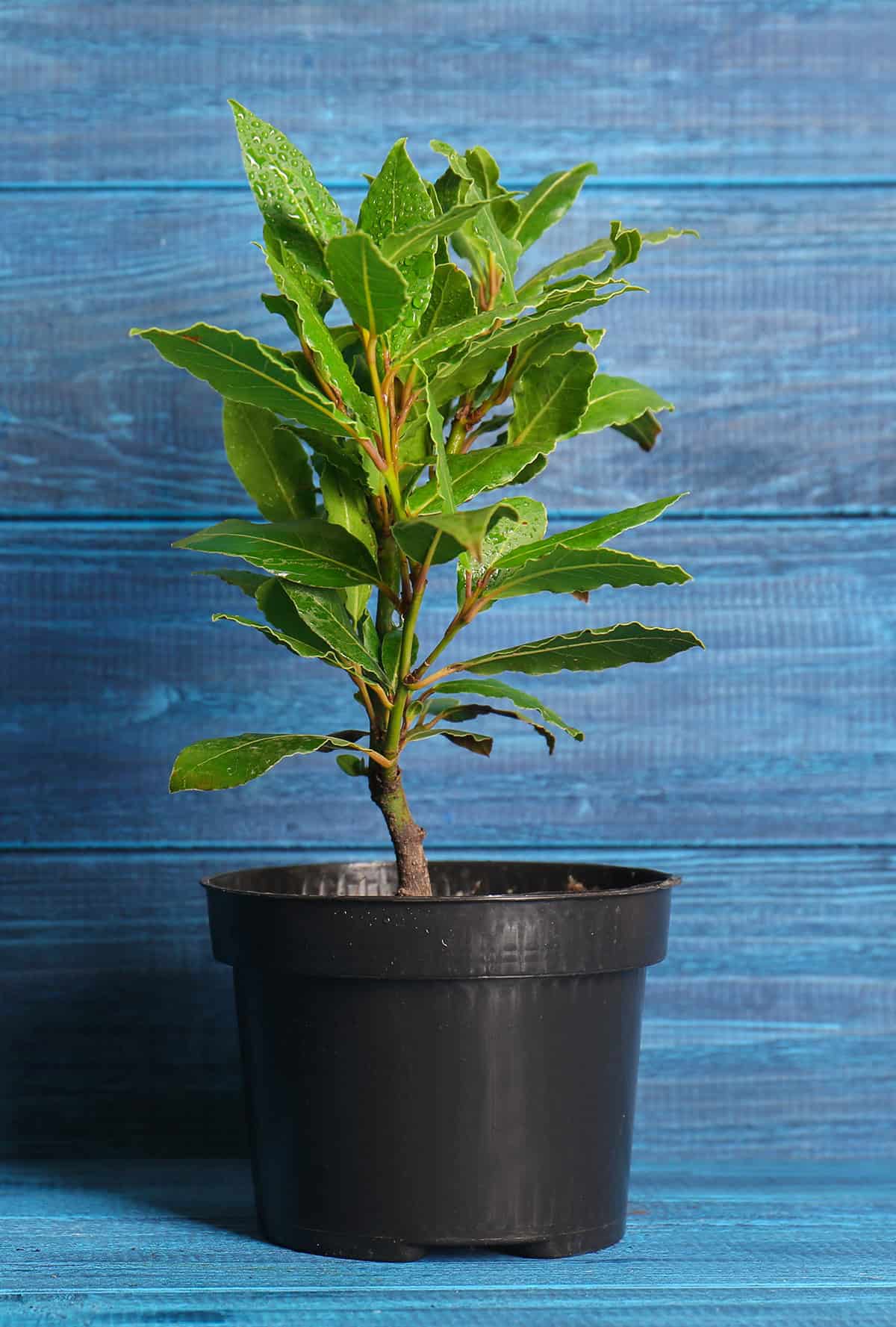
Bay laurel is a slow-growing shrub. Give it a large, deep pot and sandy, well-drained soil. It prefers sun but does okay with some shade.
Water when the top inch dries out. Prune to control size. The leaves are great in soups and stews. Move indoors for winter in cold climates.
Lavender
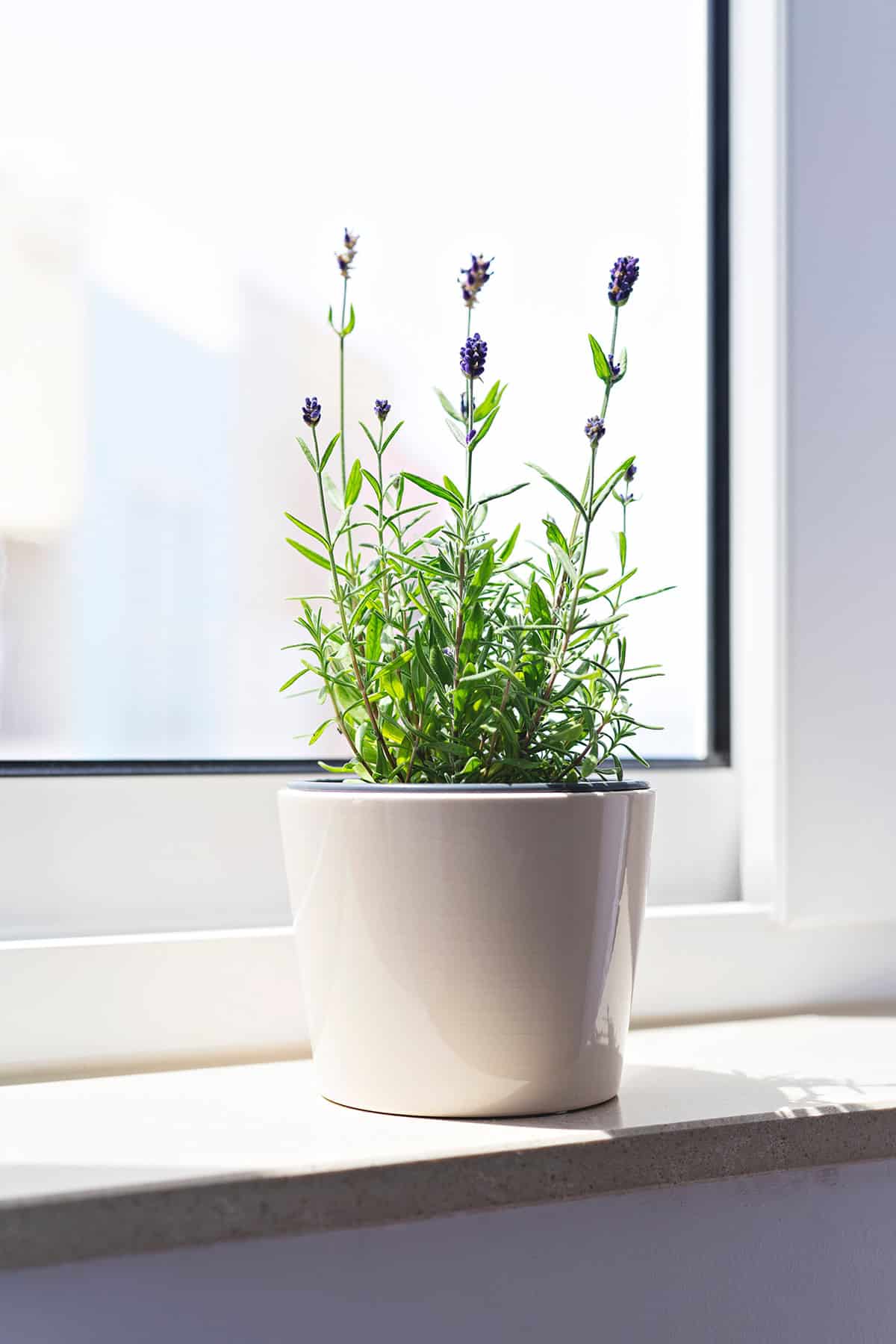
Lavender loves sun and a gritty, fast-draining mix. Clay or terracotta pots help avoid soggy roots. Let the soil dry out between waterings.
Prune after it blooms. It doesn’t need much fertilizer. The flowers attract pollinators, and compact types are best for pots.
Fennel
Fennel grows a long taproot, so pick a deep pot. Rich, well-drained soil and full sun make it happy. Keep soil moist.
Harvest young leaves anytime. Let it flower for seeds, or grow Florence fennel if you want bulbs—just thin seedlings out. Expect container fennel to be smaller than garden-grown.
Stevia
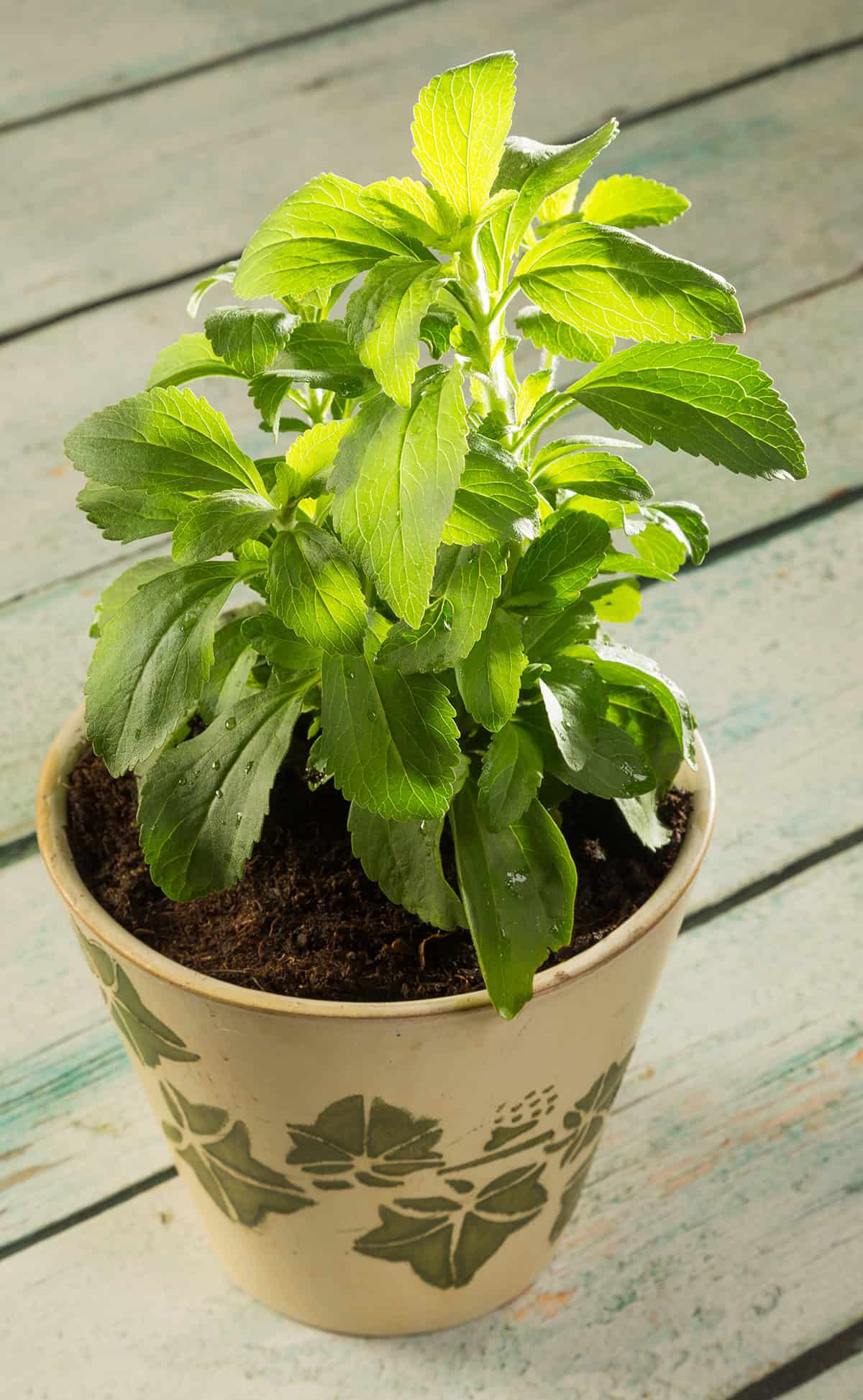
Stevia’s leaves are sweet and used as a sugar substitute. It likes a bright spot and well-drained, damp (but not soggy) soil.
Let the top inch dry before watering again. Prune for bushiness. Overwinter indoors if you get frost. Harvest leaves late for the sweetest flavor.
Catnip
Catnip’s a hit with cats and handy for herbal tea. Use a wide, sturdy pot to keep it in check. Full sun is good, and water when the soil dries out.
Pinch stems to avoid legginess. It’s tough and tolerates some neglect. Cut back after flowering for new growth.
Sorrel
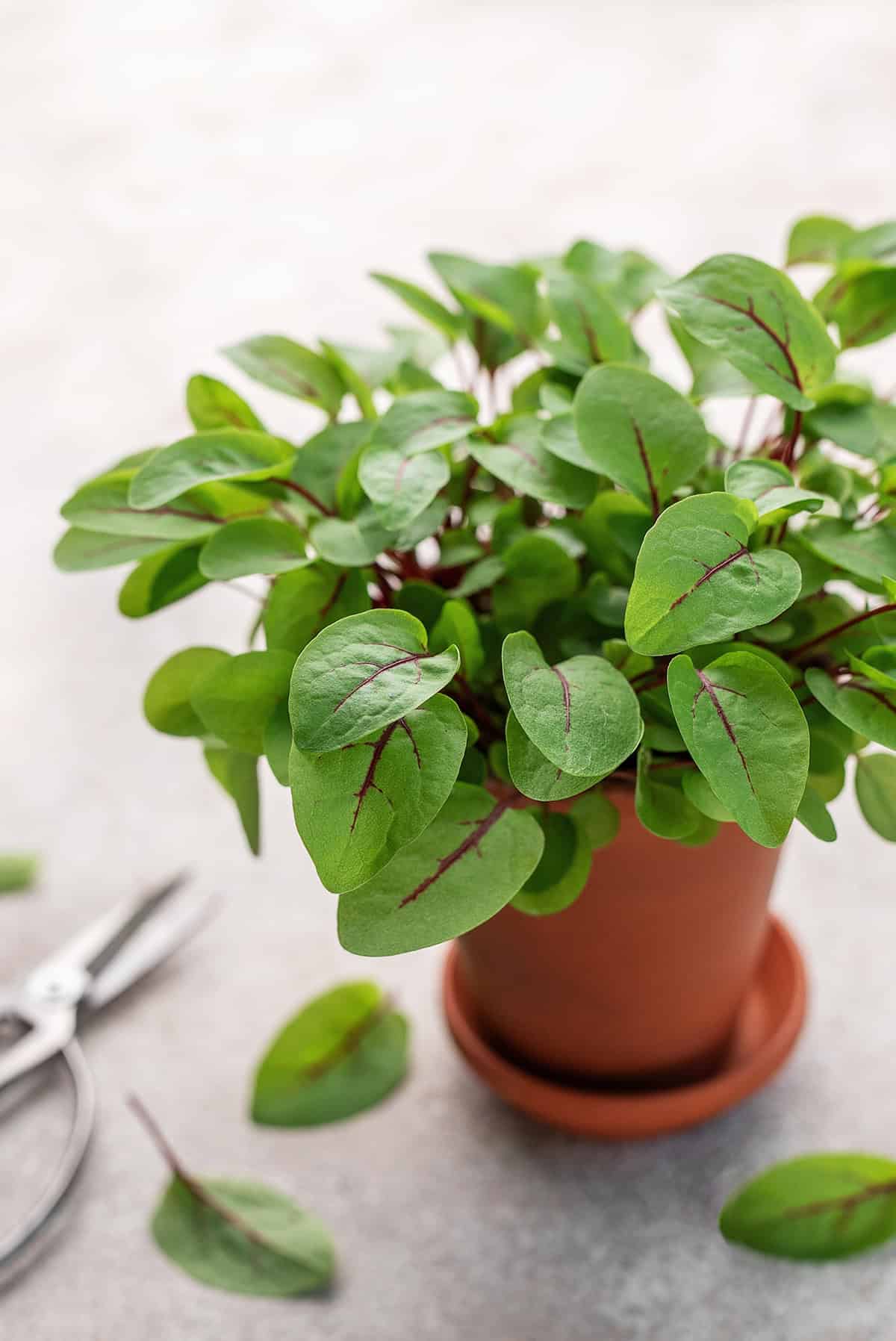
Sorrel brings a tangy, lemony punch to salads and soups. Use a medium pot with rich, moist soil. Partial shade helps in hot weather.
Pick young leaves—they taste best. Older ones get bitter. Cut the plant back now and then for tender regrowth. Sorrel’s perennial and can live in pots for years.
Nasturtium (Edible Leaves And Flowers)
Nasturtium adds both edible leaves and bright flowers. Use a wide, shallow pot with regular mix. It prefers sun but tolerates some shade.
Let the soil dry a bit between waterings. Too much fertilizer means more leaves, fewer flowers. Harvest leaves and flowers young for salads. They draw pollinators and can help keep pests at bay.
Vietnamese Coriander (Rau Răm)
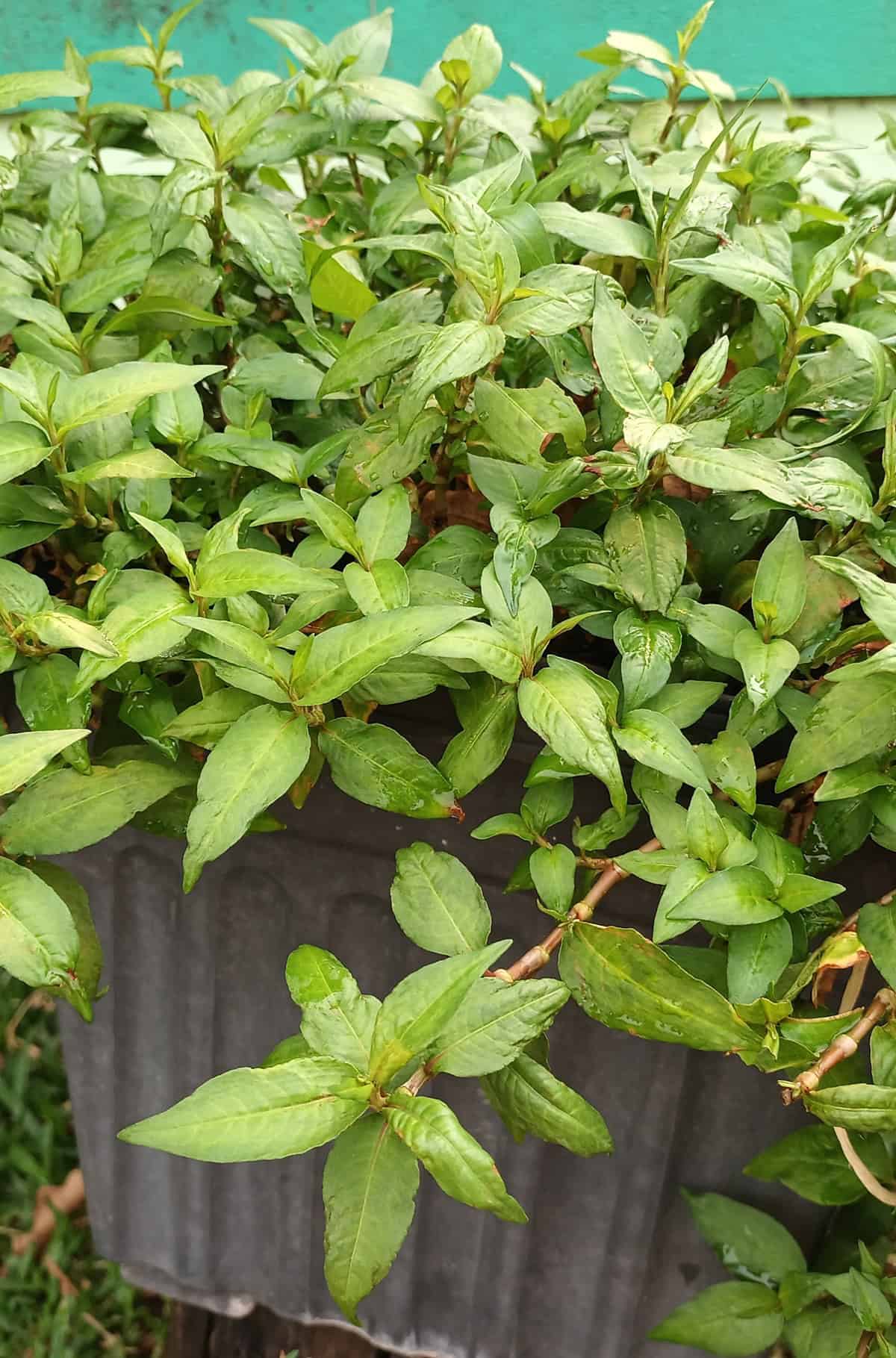
This heat-loving herb does best in containers filled with rich, moist soil. Give it partial sun, but keep it out of the harshest midday light. You’ll want to water frequently—don’t let the soil get bone dry.
Snip it back now and then to help it grow fuller. The spicy leaves pop up in plenty of Southeast Asian recipes. If winter’s coming, take some cuttings inside; frost will wipe it out. Honestly, it just seems happiest in warm, humid spots.
